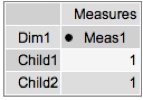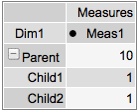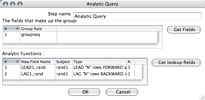I can think of no better analogy than that of a multi leg race. You know, the races where one sprinter runs as fast as they can, before passing the baton to the next sprinter.

First it was Broadbase.
Second it was LucidEra.
Third it was Eigenbase / LucidEra / SQLstream (joint development w/ Eigenbase).
Having purchased commercial rights from LucidEra it’s ours to run with now, alongside Eigenbase and SQLstream.
LucidDB has been described as the “best database no one ever told you about.” That stops today (the telling part, not the best part). Dynamo Business Intelligence Corp will take this great technology to a wider audience and we’ll be telling EVERYONE about it!
Over time, the exceptional features of this open source project will come to light (column store, bit map idxs, drop in java based user plugins, transparent remote JDBC data access, etc). I think it is important to acknowledge how LucidDB arrived to where it is today.
LucidDB is built by smart smart people (people wayyyy smarter than me!). People who’ve written parallel execution engines in Oracle. People who’ve developed Bitmap IDX implementations and helped file those patents. The heritage of LucidDB starts at Broadbase; LucidEra purchased it and brought it to Eigenbase. Eigenbase, and it’s sponsoring companies, have most claim to its current state. Their stewardship and ongoing evolution of the project is a testament to their talents and commitment to open source development. When you pick up LucidDB/DynamoDB and get your first “Ahhhh Cool! 10x Faster than my current database” you have LucidEra/SQLstream/Eigenbase devs to thank. John V. Sichi (lead and main project sponsor), Tai Tran, Julian Hyde, Rushan Chen, Zelaine Fong, Sunny Choi, Steve, Marc, Richard, Hunter, Edan, Damian, Boris, Benny, Stephan, Oscar, …. and the list goes on and on and on. Some of these people will be helping (in small and big ways) with the new company which is great for customers knowing that the people that wrote this stuff will be helping them be successful!
What’s the plan?
- Open Source.
Lots of it. Any readers of this blog, or who know me in general, will know I’m a “burn the boats,” open source kind of guy. We’ll be creating some new projects to make using the features/functions already in LucidDB easier. We’ll also be adding new features, which will make their way back into the LucidDB mainline.
- Commercial in Name Only.
Mainline DBMS enhancements and development continue, and will continue to be, in LucidDB (Eigenbase). New projects will be available under an OSI approved license. DynamoDB is the prepackaged, assembled, UI included distribution built for customers/evaluators that we’ll offer support on. Should be as easy as we can possibly make it to evaluate, purchase, and use.
- In Progress.
We’ve let the announcement ahead of having our website built, or having completed our own DynamoDB QA’ed build. Our open source roots guide us to an “early and often” approach and we’re taking that approach here. Be patient with us as we roll out the business bit by bit over the next few months. Our #1 priority: establish our support/build/qa infrastructure and get an already great piece of software into hands of people who can benefit from it. Hint: If you’ve ever done a star schema on MySQL you need to talk to us!
One thing I am personally looking forward to is getting to work even more extensively with everyone involved at Eigenbase, including the very talented devs at SQLstream (who produce the best real time analytics/integration engine available).
Feel free to join up in taking LucidDB to a whole new level: Download LucidDB and give it a go yourself, since we just released a new version (0.9.2) yesterday! I believe, like others have already mentioned, adding a bit of commercial support behind an already great piece of software is a winning combination!
Drop a line on through to me if you’re interested in getting involved early on (as a charter customer, developer, user, etc). ngoodman at bayontechnologies (with the .COM).







